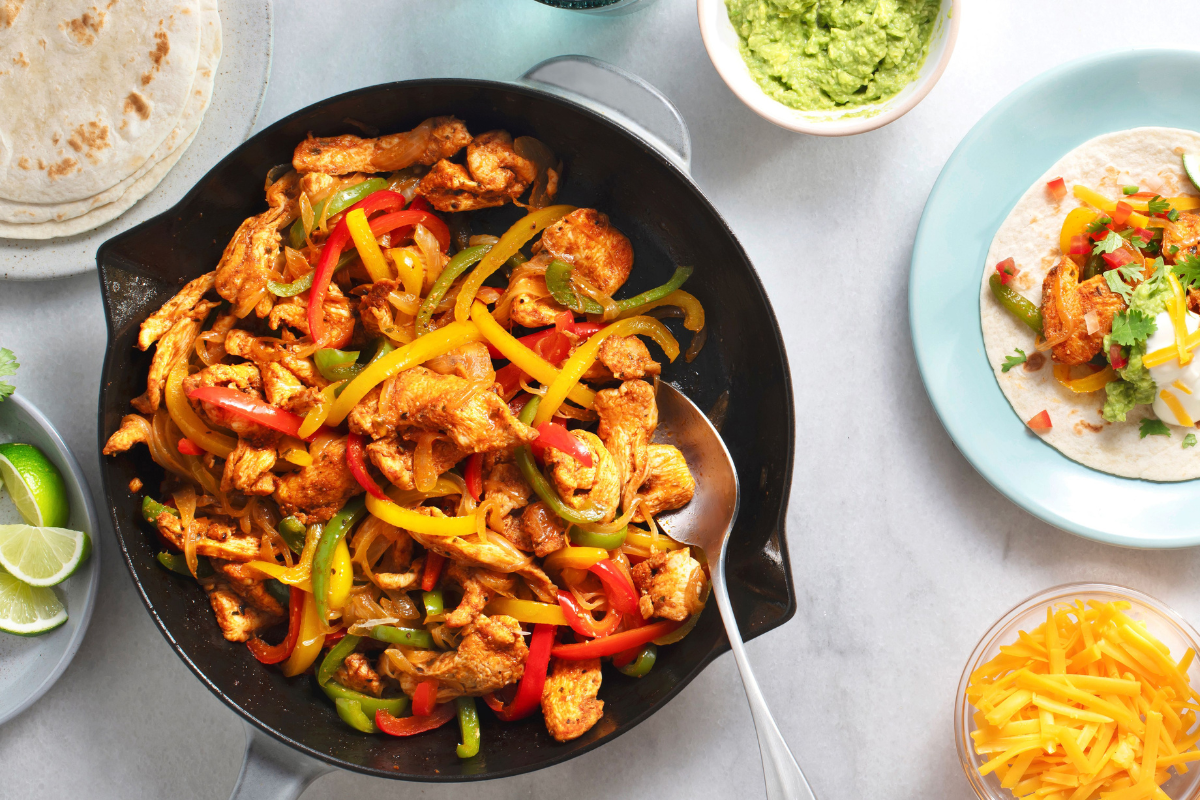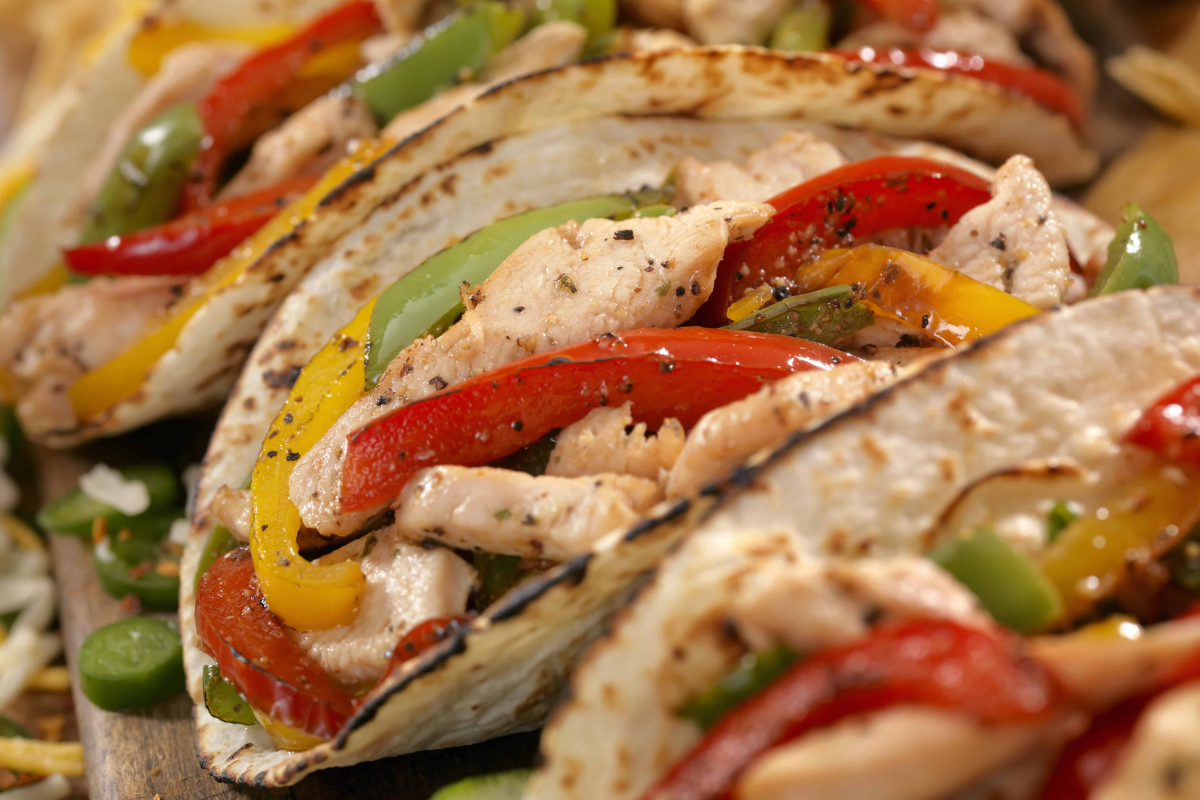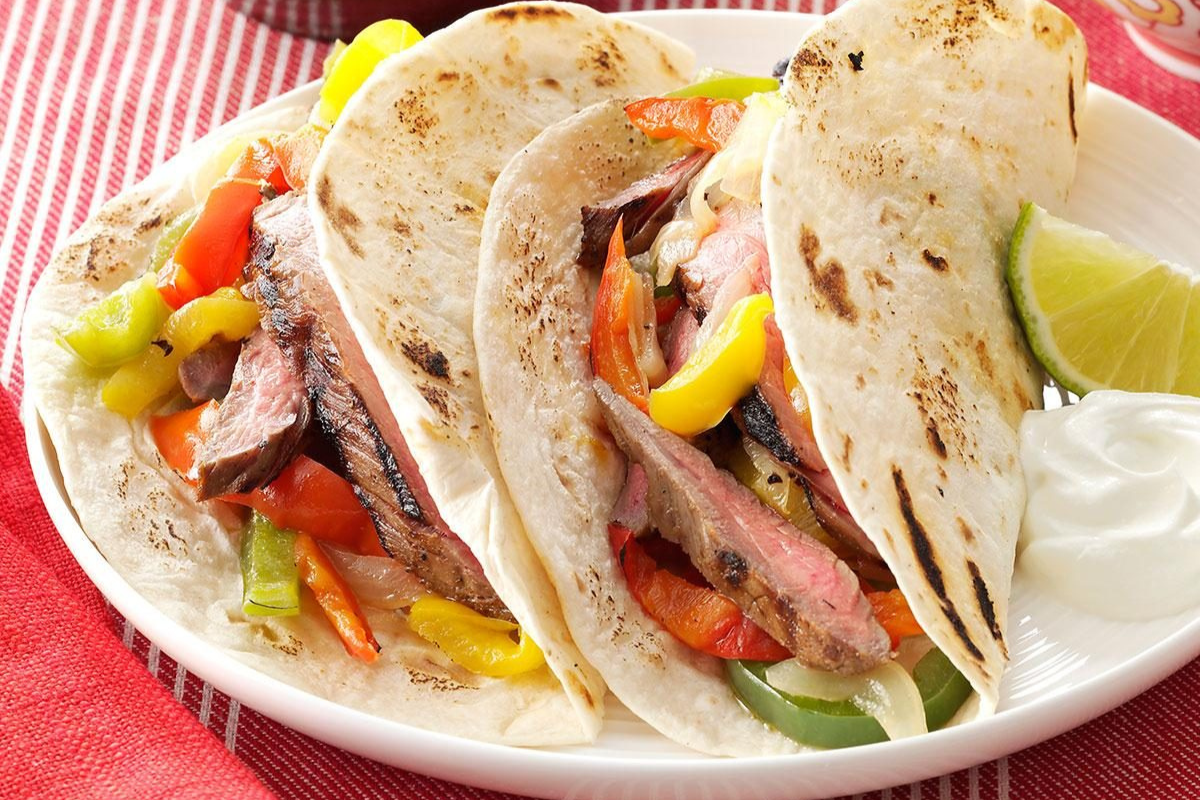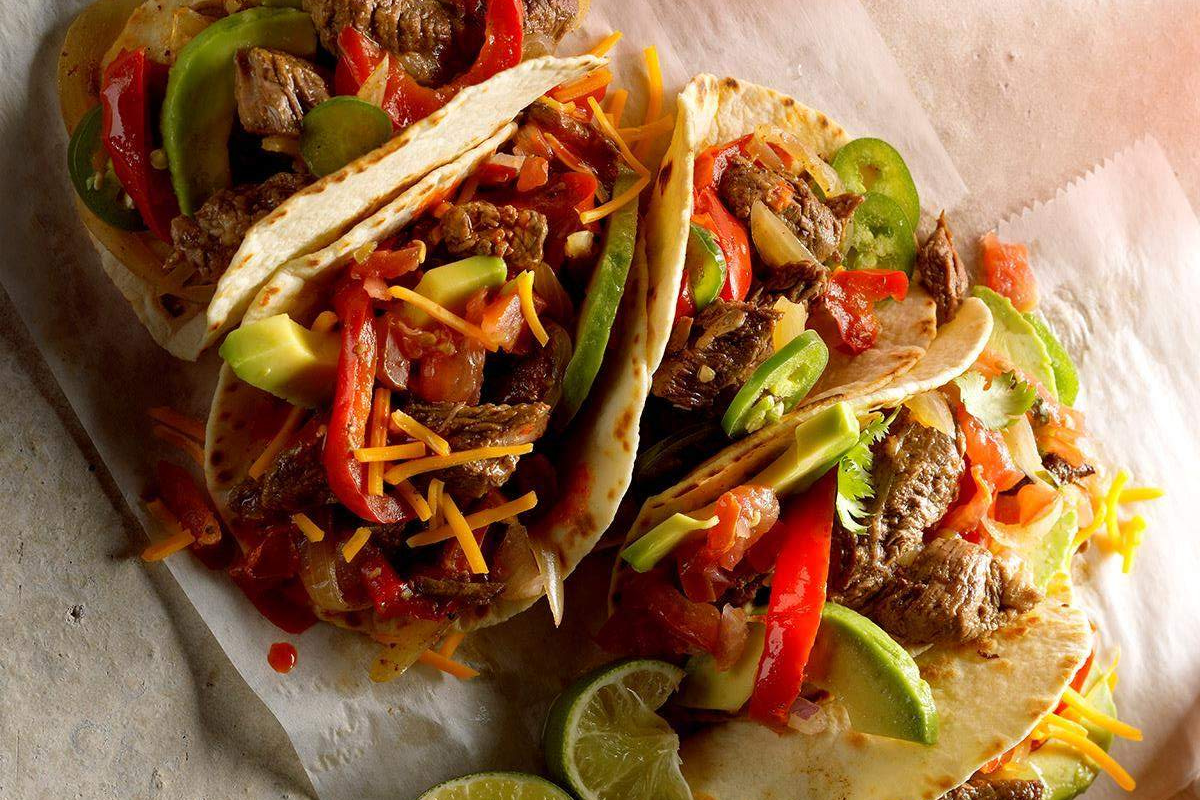Sizzling on a cast iron skillet, the aroma of charred onions and peppers mingling with tender, marinated skirt steak, fajitas are a quintessential symbol of Tex-Mex cuisine. But beyond the sizzling spectacle and the satisfying symphony of flavors, lies a fascinating story of cultural exchange, culinary innovation, and the evolution of a dish that has captivated the American palate.

Photo: The Spruce Eats
The roots of the fajita can be traced back to the northern Mexican state of Coahuila, bordering Texas. Here, ranchers and vaqueros, also known as cowboys, faced the harsh realities of the arid landscape, relying on readily available ingredients like skirt steak, onions, and peppers. Over open fires, they would grill the meat, often cut into thin strips for easier cooking, and pair it with simple accompaniments like tortillas and salsa.
As Mexican communities migrated across the Rio Grande into Texas during the 19th century, their culinary traditions intertwined with those of Anglo settlers. This cultural exchange gave birth to Tex-Mex cuisine, a vibrant fusion that incorporated elements from both cultures. The humble arrachera evolved, influenced by Texan grilling techniques and American cuts of meat like flank steak.
The 1960s and 70s witnessed the rise of fajitas as a restaurant staple. Texan restaurants like The Original Ninfa’s on Navigation in Houston and Lupe Tortilla in Austin are credited with popularizing the dish. These establishments introduced theatricality to the dining experience, grilling the meat in front of customers and serving it sizzling on a cast iron skillet. The fajita’s visual appeal and interactive presentation resonated with diners, making it a social and celebratory dish perfect for sharing.
Metamorphosis on a plate: The Fajita’s culinary odyssey

Photo: Harmons Grocery
The Americanization of the fajita continued beyond the restaurant scene. Home cooks embraced the dish, adapting it to their preferences and incorporating readily available ingredients. Marinades evolved from simple citrus and spices to complex concoctions with soy sauce, Worcestershire sauce, and even cola. The traditional skirt steak was sometimes substituted with readily available cuts like chicken or even shrimp. Bell peppers and onions became a standard accompaniment, while tortillas morphed from simple corn or flour options to include flavored varieties and even wraps.
The fajita’s impact extends beyond the realm of food. It has become a cultural icon, representing Tex-Mex culture and Texan hospitality. Its sizzling presence at backyard barbecues and family gatherings evokes a sense of casual conviviality and shared enjoyment. The dish has even transcended borders, finding its way onto menus across the globe, albeit with local variations reflecting the diverse culinary landscapes it encounters.
Today, the fajita continues to evolve. Restaurants are experimenting with new ingredients and cooking techniques, while home cooks are pushing the boundaries of flavor and presentation. From gourmet fajitas with exotic marinades and gourmet toppings to plant-based alternatives and fusion interpretations, the future of the fajita is bright.
More than just a dish, the fajita is a testament to the power of cultural exchange and culinary innovation. It is a story of humble beginnings, transformative journeys, and enduring appeal. So, the next time you savor the sizzling symphony of flavors on your plate, remember the rich tapestry of history and the vibrant spirit of Tex-Mex culture that brought the fajita to life.
Fajita crossroads: Exploring regional variations of a Tex-Mex icon

Photo: Taste Of Home
While the sizzling sound of fajitas conjures an image of Texas sunshine and cowboy hats, this Tex-Mex icon wears many hats itself, adapting its flavors and ingredients as it ventures beyond the Lone Star State. Let’s embark on a culinary journey, exploring how regional variations paint a vibrant portrait of the ever-evolving fajita.
Texas itself boasts a diverse tapestry of fajita styles. In South Texas, where the dish’s roots lie, simplicity reigns. Skirt steak gets a light marinade of cumin, chili powder, and garlic, sizzling alongside charred onions and peppers. Tortillas are warmed, beans are refried, and pico de gallo adds a zesty touch, staying true to the ranchera heritage.
As fajitas migrate north, the heat gets turned up. In Austin, smoked paprika and chipotle peppers infuse the marinade, while grilled vegetables like squash and zucchini make an appearance. In Dallas, fajitas embrace Tex-Mex fusion, with ancho chilies and even a touch of sweetness from Worcestershire sauce adding complexity.
Across the border, Mexican regional variations weave their magic. In Monterrey, carne asada takes center stage, marinated in citrus and grilled to perfection. Puebla’s mole poblano sauce adds a rich, earthy layer to the mix, while in Yucatán, achiote paste and citrus juices lend a vibrant tropical twist.
Coastlines add their own flavors. In California, grilled seafood like shrimp and mahi-mahi join the party, often marinated in citrus and tequila. The Pacific Northwest embraces sustainability, offering plant-based alternatives like portobello mushrooms or jackfruit fajitas. On the East Coast, fajitas get a New York makeover. Philly cheesesteak fajitas with jalapenos and sriracha satisfy cravings, while BBQ-marinated meats bring a Southern twang to the table.

Photo: Cocina R Recetas De Postres
The fajita’s journey isn’t limited to North America. In Asia, kimchi and teriyaki glazes find their way into marinades, while in Europe, fajitas take on a Mediterranean air with olives, artichokes, and feta cheese.
Beyond these variations, a common thread binds the fajita: the spirit of adaptability and customization. Whether it’s adding pineapple chunks for sweetness, swapping tortillas for lettuce wraps for a low-carb twist, or experimenting with exotic marinades, the fajita invites personal expression, making it a culinary canvas for endless creativity.
The next time you order fajitas, remember that you’re not just enjoying a sizzling plate of meat and vegetables. You are engaging in a regional dialogue, tasting the evolution of a Tex-Mex legend, and perhaps even adding your own brushstroke to its ever-changing story. So, dig in, explore, and let your taste buds be your guide on this delicious journey of fajita variations!

